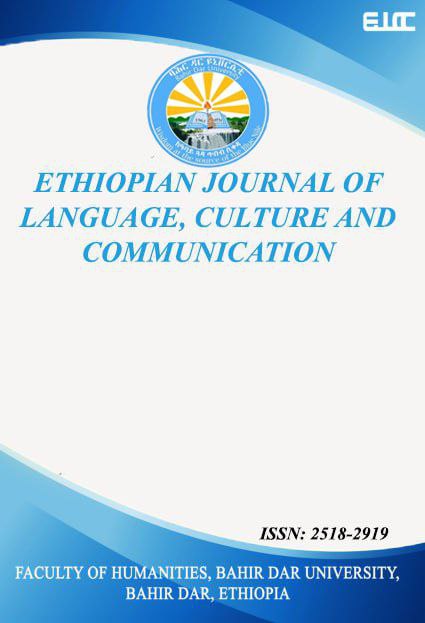Analysis of mobilization and stakeholder participation: the case of Amhara Development Association
Abstract
This article offers a comprehensive exploration of the complex dynamics involved in mobilization and stakeholder participation within the context of participatory development communication strategies. It specifically focuses on the Amhara Development Association and its practices in this regard. Employing an interpretative research paradigm, the study meticulously selects its sample using purpose-sampling techniques. Through a combination of in-depth interviews and thorough document analysis, a rich dataset is assembled to deeply investigate the strategies employed by the association. The findings of the study reveal a nuanced and multifaceted approach undertaken by the Amhara Development Association. This approach leverages various social institutions, media platforms, and governmental structures to mobilize communities toward self-realization through grassroots efforts. However, despite the association's concerted efforts, several challenges hinder the implementation of a fully participatory communication approach. One significant obstacle identified is the predominant role of the government, which sometimes limits the association's autonomy in decision-making and action. Furthermore, the association faces constraints in hiring an adequate number of communication experts, which affects its ability to fully embrace a participatory communication strategy. It suggests that the association should strive for greater independence by empowering its coordinators, project planners, and district-level structures. This empowerment aims to foster a more inclusive and participatory communication strategy, thus enhancing the association's effectiveness in community mobilization and ultimately contributing to sustainable development efforts in the region.
Authors who publish with this journal agree to the following terms:
- Authors retain copyright and grant the journal right of first publication with the work simultaneously licensed under a Creative Commons Attribution License that allows others to share the work with an acknowledgement of the work's authorship and initial publication in this journal.
- Authors are able to enter into separate, additional contractual arrangements for the non-exclusive distribution of the journal's published version of the work (e.g., post it to an institutional repository or publish it in a book), with an acknowledgement of its initial publication in this journal.
- Authors are permitted and encouraged to post their work online (e.g., in institutional repositories or on their website) prior to and during the submission process, as it can lead to productive exchanges, as well as earlier and greater citation of published work (See The Effect of Open Access).


